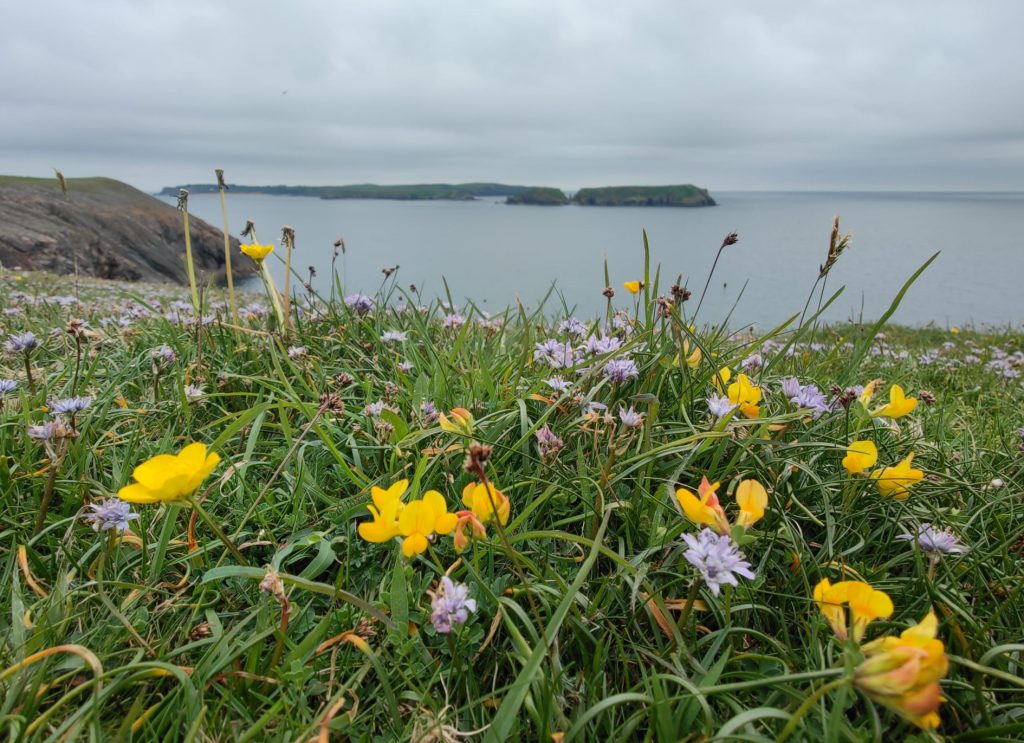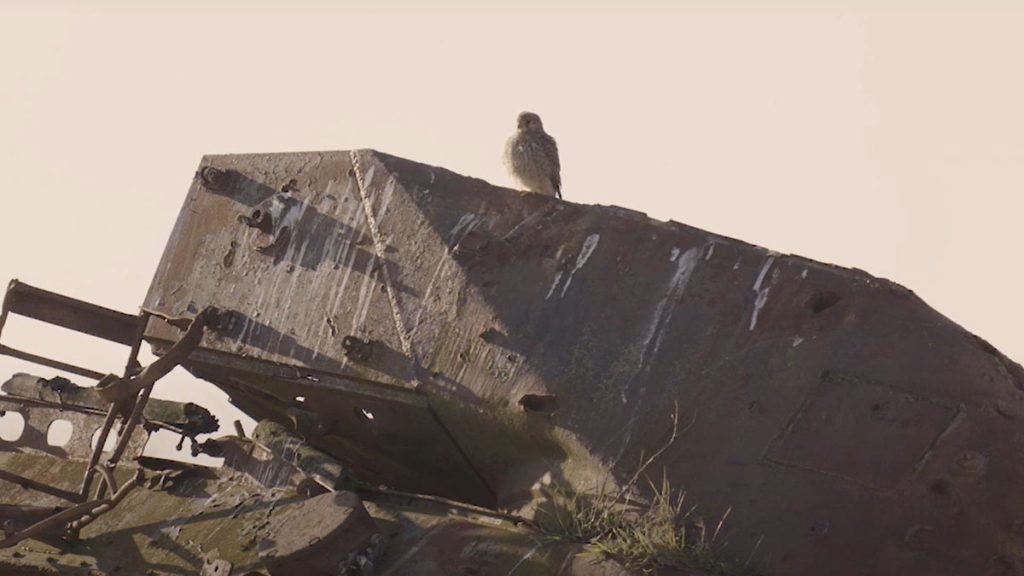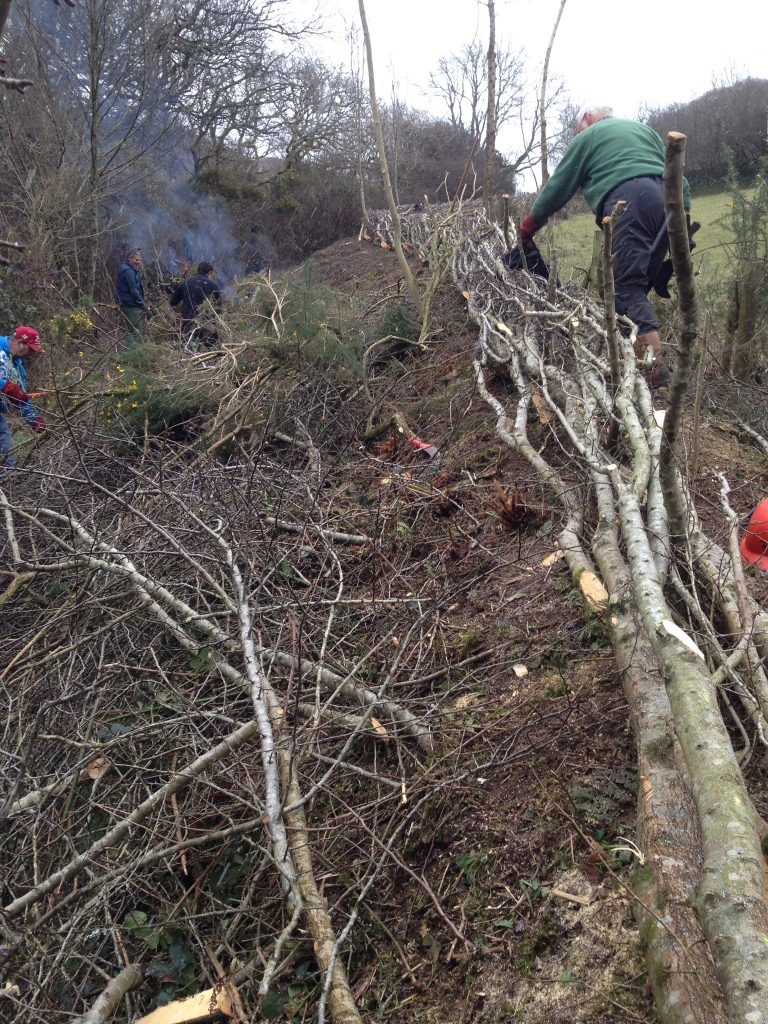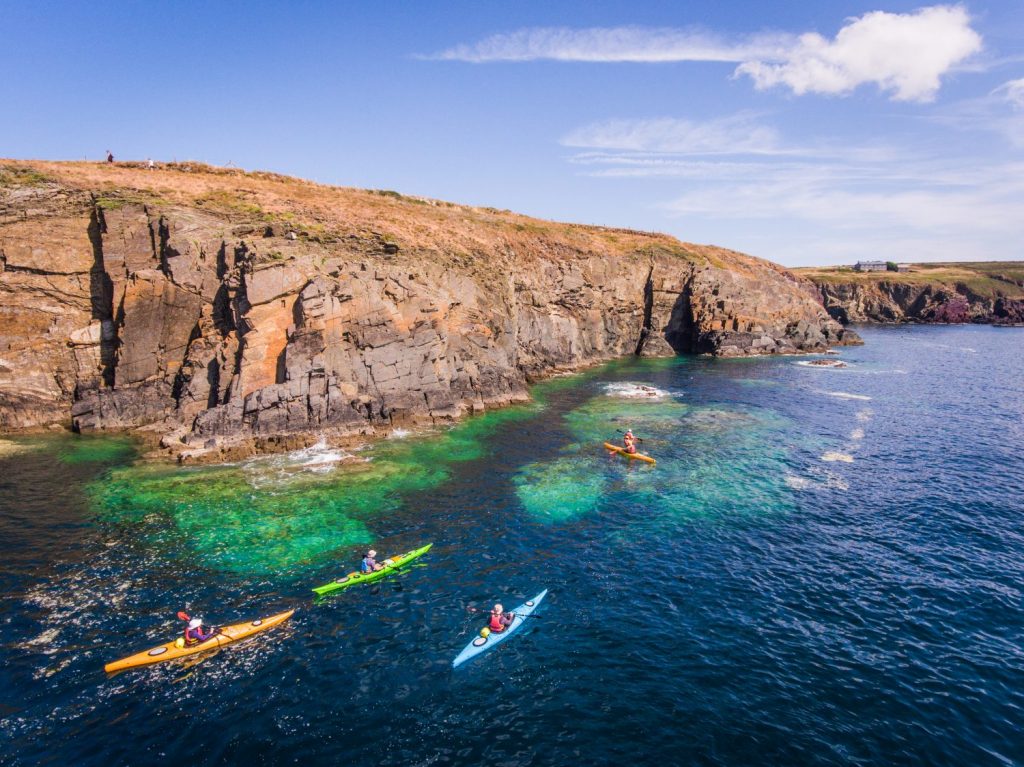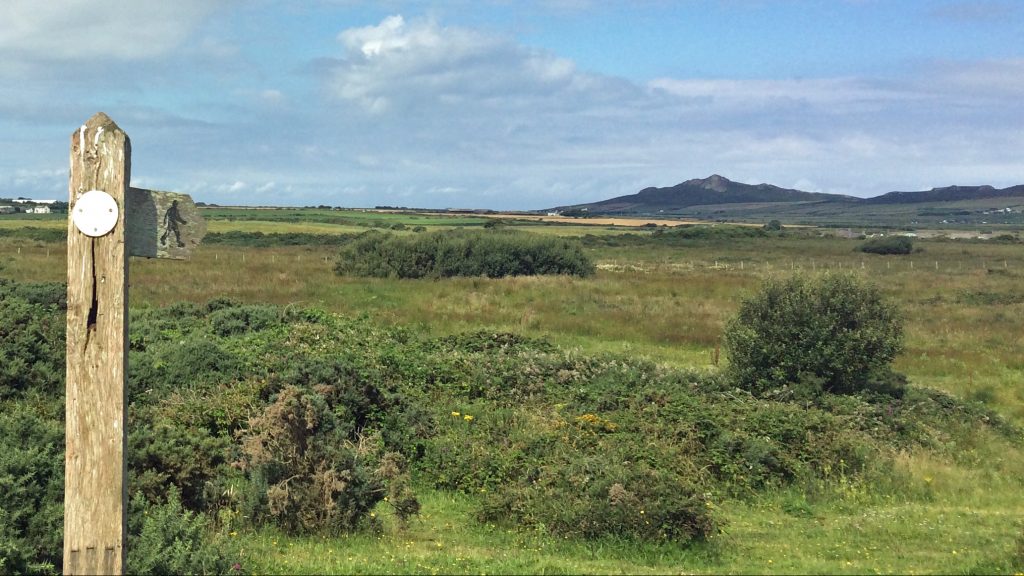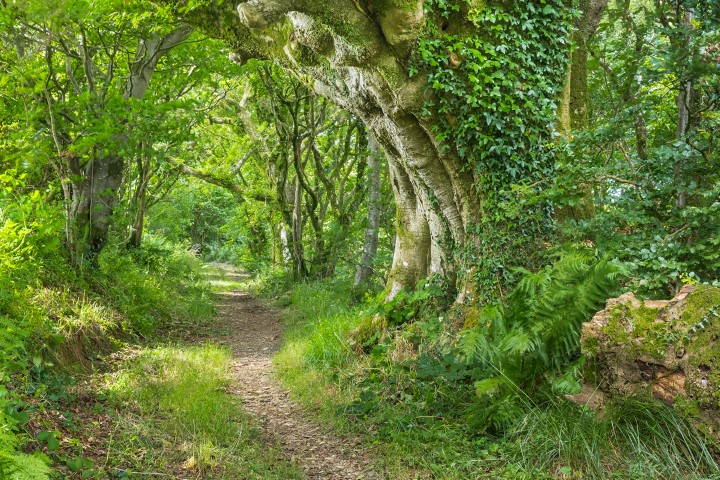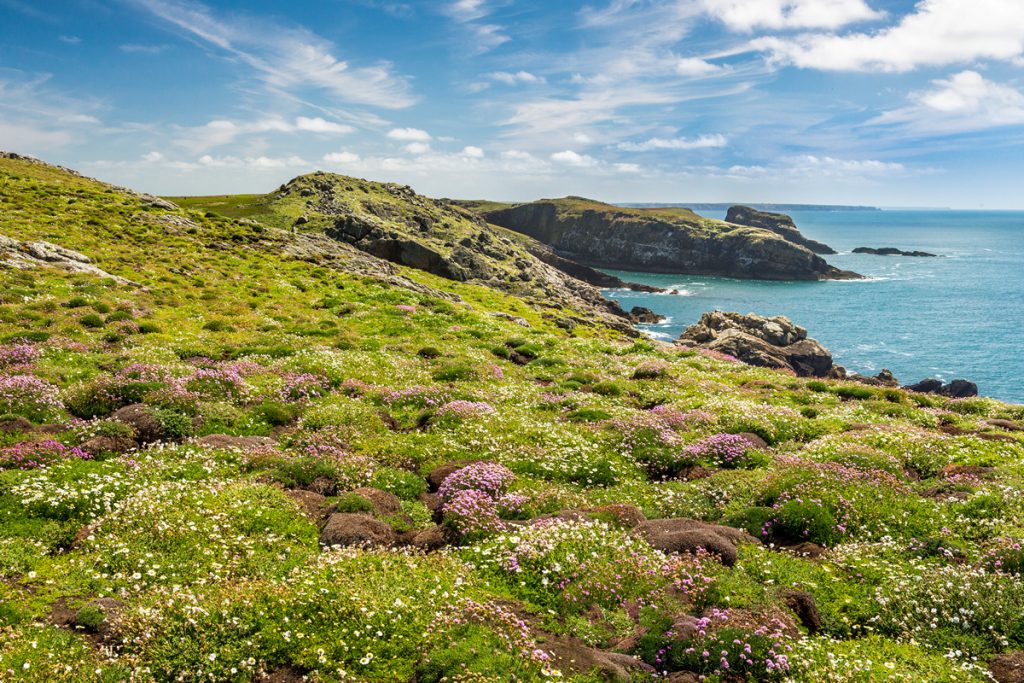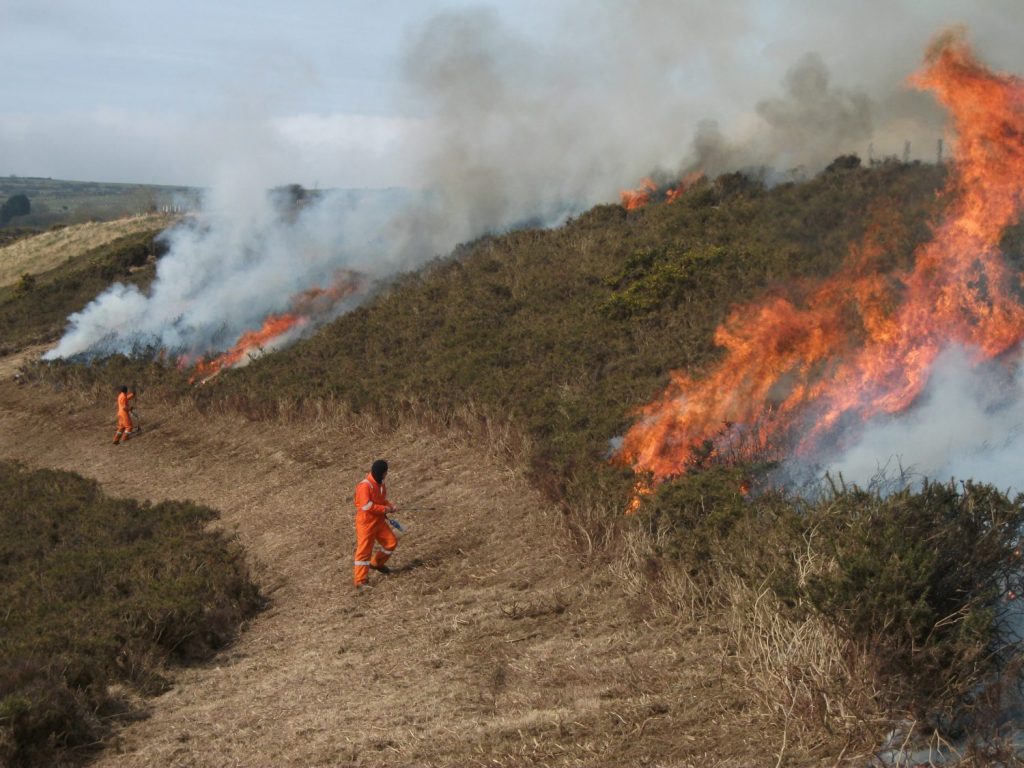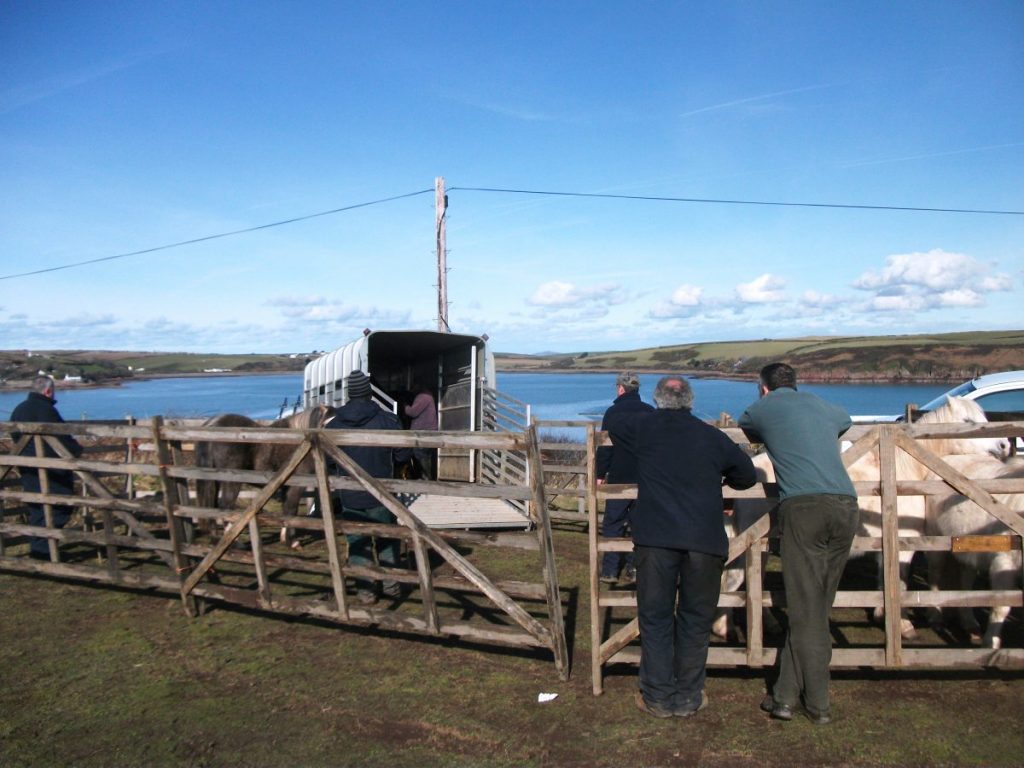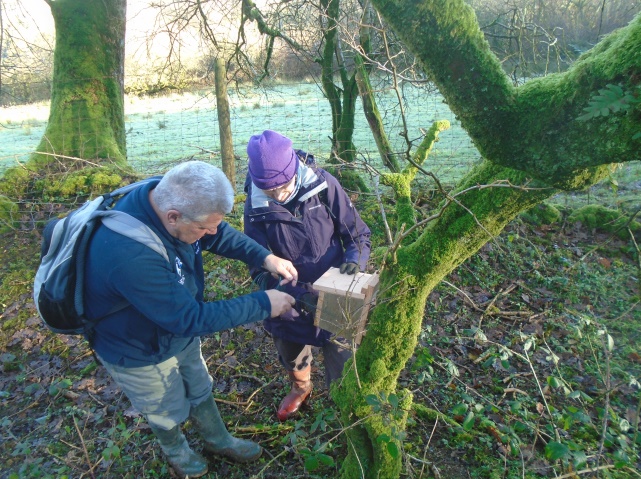For many years the main problems facing Pembrokeshire’s coastline have been the two extremes of agricultural intensification on the one hand and neglect on the other. To tackle this problem effectively it was felt that a local initiative was needed to complement the national agri-environment scene to ‘fill the gaps’.
Conserving Coastal Slopes – the early years
Back in 1999, Pembrokeshire Coast National Park Authority received funding from the European Agricultural Guidance and Guarantee Fund for a three-year project called ‘Conserving The Coastal Slopes – Gwarchod Y Godiroedd’.
This was set up to address the decline in traditional farming practices (primarily grazing) along the coast and the resulting decline in its internationally important coastal wildlife.
This included coastal heath and flower-rich maritime grassland, together with a host of species which depend on them, the flagship being the rare chough which has Pembrokeshire as one of its strongholds.
The project was well-received and developed as it went along, in order to meet the needs of coastal landowners and wildlife.
Conserving the Park – the project today
We found that the lessons we learnt from managing the coast were also applicable to other habitats and other parts of the National Park, so when the original scheme ended in 2002, it was rolled out accordingly – this time as ‘Conserving the Park – Gwarchod y Parc’.
Under-grazing is a key problem facing many habitats today; at the other end of the spectrum, there is also a need to restore land which has been intensively managed. The project aims to address both these issues – and everything in between.
The scheme is now core-funded by the National Park Authority, which is recognition of the importance of the scheme in meeting the Authority’s primary purpose to conserve and enhance its natural beauty, wildlife and cultural heritage.
A report on 15 years of the Conserving the Park was released in 2019.
Conserving the Park Story Map
Further land management advice
We have a rolling programme of sustainable land management advice, guidance and practical assistance that has included over 220 sites covering more than 2,500 hectares since the scheme began. This advice and the guidelines can be found in the above Help for your wildlife on your land downloadable leaflets.
Our aim is to reinstate the network of wildlife friendly corridors and to manage and enlarge the key wildlife habitats that make up the circulation system of our countryside. This will give species the chance to establish larger, more sustainable populations, and to create new ones.
The idea therefore, is to optimise conditions for wildlife; however, wherever and whenever we can!
Contact Us
For more information on these schemes please email Conservation Officer Julie Garlick or call 01646 624800.
